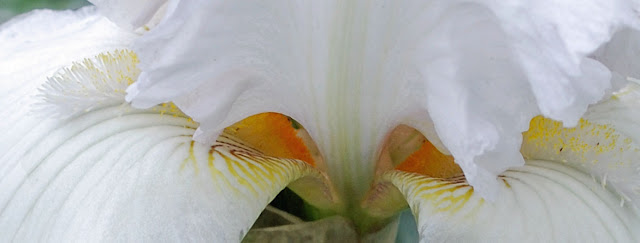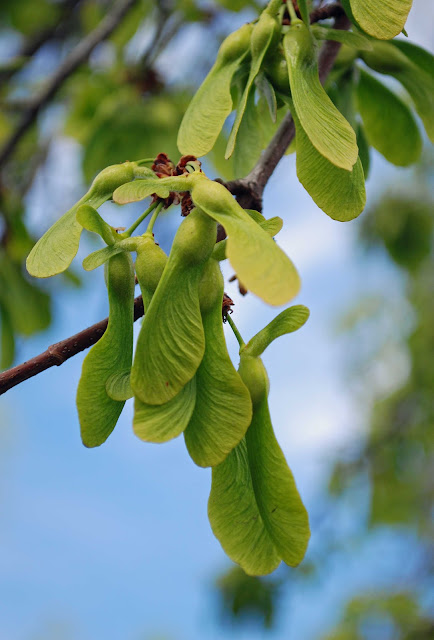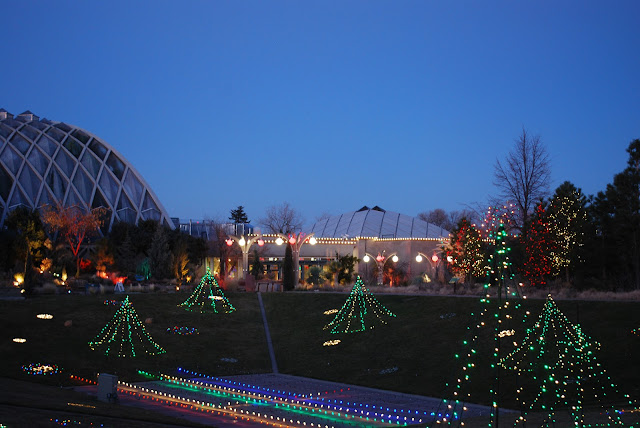2012 Solstice Countdown . . . 1!
 |
| Big Horn Medicine Wheel, Wyoming USA |
Those of us who are avid gardeners and living in the Northern Hemisphere can't wait for the winter solstice, the shortest day of the year. Then the days will begin to lengthen and we can look forward to the gardening season once again. Whoo-hoo! This year the solstice occurs on December 21st, and to celebrate I'm posting a photo-a-day countdown with some of my favorite photographs of 2012. Enjoy!
2012 Solstice Countdown . . . 2!
 |
| Geranium sanguinem |
Those of us who are avid gardeners and living in the Northern Hemisphere can't wait for the winter solstice, the shortest day of the year. Then the days will begin to lengthen and we can look forward to the gardening season once again. Whoo-hoo! This year the solstice occurs on December 21st, and to celebrate I'm posting a photo-a-day countdown with some of my favorite photographs of 2012. Enjoy!
2012 Solstice Countdown . . . 3!
 |
| Anethum graveolins |
Those of us who are avid gardeners and living in the Northern Hemisphere can't wait for the winter solstice, the shortest day of the year. Then the days will begin to lengthen and we can look forward to the gardening season once again. Whoo-hoo! This year the solstice occurs on December 21st, and to celebrate I'm posting a photo-a-day countdown with some of my favorite photographs of 2012. Enjoy!
2012 Solstice Countdown . . . 4!
 |
| Begonia spp |
Those of us who are avid gardeners and living in the Northern Hemisphere can't wait for the winter solstice, the shortest day of the year. Then the days will begin to lengthen and we can look forward to the gardening season once again. Whoo-hoo! This year the solstice occurs on December 21st, and to celebrate I'm posting a photo-a-day countdown with some of my favorite photographs of 2012. Enjoy!
2012 Solstice Countdown . . . 5!
 |
| Asclepius tuberosa |
Those of us who are avid gardeners and living in the Northern Hemisphere can't wait for the winter solstice, the shortest day of the year. Then the days will begin to lengthen and we can look forward to the gardening season once again. Whoo-hoo! This year the solstice occurs on December 21st, and to celebrate I'm posting a photo-a-day countdown with some of my favorite photographs of 2012. Enjoy!
2012 Solstice Countdown . . . 6!
 |
| Iris germanica |
Those of us who are avid gardeners and living in the Northern Hemisphere can't wait for the winter solstice, the shortest day of the year. Then the days will begin to lengthen and we can look forward to the gardening season once again. Whoo-hoo! This year the solstice occurs on December 21st, and to celebrate I'm posting a photo-a-day countdown with some of my favorite photographs of 2012. Enjoy!
2012 Solstice Countdown . . . 7!
 |
| Acer saccharinum |
Those of us who are avid gardeners and living in the Northern Hemisphere can't wait for the winter solstice, the shortest day of the year. Then the days will begin to lengthen and we can look forward to the gardening season once again. Whoo-hoo! This year the solstice occurs on December 21st, and to celebrate I'm posting a photo-a-day countdown with some of my favorite photographs of 2012. Enjoy!
2012 Solstice Countdown . . . 8!
 |
| Bergenia cordifolia |
Those of us who are avid gardeners and living in the Northern Hemisphere can't wait for the winter solstice, the shortest day of the year. Then the days will begin to lengthen and we can look forward to the gardening season once again. Whoo-hoo! This year the solstice occurs on December 21st, and to celebrate I'm posting a photo-a-day countdown with some of my favorite photographs of 2012. Enjoy!
2012 Solstice Countdown . . . 9!
 |
| Narcissus spp |
Those of us who are avid gardeners and living in the Northern Hemisphere can't wait for the winter solstice, the shortest day of the year. Then the days will begin to lengthen and we can look forward to the gardening season once again. Whoo-hoo! This year the solstice occurs on December 21st, and to celebrate I'm posting a photo-a-day countdown with some of my favorite photographs of 2012. Enjoy!
2012 Solstice Countdown . . . 10!
 |
| Scillia spp |
Those of us who are avid gardeners and living in the Northern Hemisphere can't wait for the winter solstice, the shortest day of the year. Then the days will begin to lengthen and we can look forward to the gardening season once again. Whoo-hoo! This year the solstice occurs on December 21st, and to celebrate I'm posting a photo-a-day countdown with some of my favorite photographs of 2012. Enjoy!
Photographing the Holiday Garden
I recently took a class at Denver Botanic Gardens with their official photographer, Scott Dressel-Martin, that focused (heh) on capturing images of their Blossoms of Light holiday landscape lighting presentation. I have very little experience with low-light or night-time photography, so I was open to any and all ideas that I could glean in a 3 hour, hands-on setting. My goal was to learn a few tricks that would let me take the best photos possible without making fiddly adjustments to my camera. In other words, stick with my usual grab-and-go, mode settings. Scott was a fun and informative teacher and was able to emphasize the main points that apply universally while also including some more detailed specifics for the advanced photographers in the group (not me!).
Note: The photos you see here have not been photo-shopped, other than to reduce their size a bit for use here on the blog...
Here are a few pointers that I gleaned from the class:
#1 You must use a tripod. In low light situations the shutter speed is very slow, and it's impossible to hold a camera completely still. Although I've owned a nice tripod for many years, I never use it (just too darn lazy). This was the most awkward thing for me to adjust to, but it does make a huge difference in the clarity of the photos. A hands-off shutter release is also helpful (make mine a remote, please, Santa?) in preventing wobbles.
#2 The best light is during deep dusk — after sunset but before it's totally dark. At this time of year that's between 4:45 and 5:30 (with only about 10 minutes of perfection!). At this point there is still color in the sky. That color and light create depth of field — a foreground, middle ground, and background — for a much more engaging image. Interestingly, the sky looks dark to our eyes much sooner than it does to the camera lens. Scott had us set up our cameras at 4:45 PM and continue taking the same shot (looking north-northeast) every few minutes to monitor how the light looked via the camera's screen:
 |
| 4:50 PM MST |
 |
| 5:00 PM MST |
 |
| 5:07 PM MST |
 |
| 5:40 PM MST, looking west |
 |
| 5:51 PM MST |
 |
| 5:15 PM MST looking south |
 |
| 5:17 PM MST looking north |
#4 Have fun. Even a blurry photo may have use as a background image...
 |
| original image |
 |
| super cropped image |
Wordless Wednesday 12.05.2012
Garden Designer's Roundtable: Memorable Plants
Today, the Garden Designers Roundtable will explore the power of plants and memory. Plants have a way of triggering memories and emotions that run through our lives like a stream of film clips — memories of a special time, a favorite place, or a beloved person; it could be the plant itself, its color, fragrance, or even its form. Sometimes your "trigger" plants are not your favorite plants at all; the thoughts they evoke may not be pleasant ones, but they are part of your history and your reality.
 |
| flowering crab, Malus spp |
 |
| tree peony, Paeonia spp |
 |
| rabbitbrush, Chrysothamnus nauseosus nauseosus |
 |
| common lilac, Syringa vulgaris |
 |
| Colorado blue spruce, Picea pungens |
"What kind of tree would that be?" I ask. "A fir or a spruce? A pine?"
"You know!" they respond, "The one like this!" ::hands and arms forming a triangle::
I feel like Linus to their Lucy in A Charlie Brown Christmas:
The heart wants what the heart wants.
Please join my fellow members of the Garden Designers' Roundtable for more on memory and plants:
Happy Thanksgiving!
Meet . . . Sedum middendorffianum!
That's a darn big name for a sweet little sedum! The common name, Chinese mountain stonecrop, is just as long, but not quite such a mouth full. This low growing evergreen is fairly new to my garden; I planted it in a tough spot between the street and driveway just a few years ago. It's flourished on neglect, crummy lean soil, and little water.
The color show is spectacular in late spring when red stems emerge from the rich green foliage and explode with bright, yellow flowers and red bracts. The overall effect is a multi-colored WOW!
The succulent foliage hangs tough during the summer, looking fresh and green. Don't you love those cute serrated edges?
And if you leave the flowers / bracts to ripen, you'll be rewarded in the fall with this beautiful star-like texture.
Sedum middendorffianum is hardy in USDA zones 4-8 and needs full sun to thrive. Plant it in a well draining, infertile soil. Mature size is 4" tall by 12-18" wide. The plants I've chosen to partner with this sedum include Penstemon pinifolius 'Mersea Yellow', Helictotrichon sempervirens (blue oat grass), and 'Hidcote' English lavender (not shown).
Yucca, Hesperaloe, Russian sage, and blue mist spirea would also work well with this sedum. I hope you'll give it a try!
Wordless Wednesday 11.14.2012
One more time...
I couldn't resist sharing a couple more photos of spectacular fall foliage color. This is Geranium sanguineum (bloody cranesbill) in my front garden today. I wanted to capture the color before the snow arrives tomorrow...
Have a great weekend!
Wordless Wednesday 10.31.2012
Super Red
You can keep your burning bush pink and your orangey-red Autumn Blaze maple (the "it" tree for fall color around here these days); I'll take the dark, luxurious reds of fragrant sumac, Rhus aromatica, any time.
The glossy foliage catches the low autumn light and adds depth and complexity — plus a touch of glamour — to this Rocky Mountain native.
Hands down, the best shrub for full sun, poor soils, and dry conditions when your goal is super red fall foliage.
Wordless Wednesday 10.24.2012
October means Orange!
The last few days I've been seeing orange everywhere! From soft, pale coral to intense, almost red (and I'm not even talking pumpkins!). . .
 |
| 'Autumn Brilliance' serviceberry. This Amelanchear may morph into red. |
 |
| Engleman ivy. Parthenocissus may run rampant, but fall color never disappoints. |
 |
| St. Johnswort. Hypericum is not known for its fall color, but it's always showy. |
 |
| The plumes get the press with maiden grass, but Miscanthus foliage color is terrific. |
 |
| An unknown hawthorn, Crataegus spp., gets orange right. |
 |
| Orange sand cherry, Prunus besseyi, plays well with the blue berries of Oregon grape holly, Mahonia. |
 |
| Wind delivered beauty: leaves from a neighbor's 'Autumn Blaze maple, Acer x freemanii 'Jeffersred'. |
 |
| Little bluestem grass, Schizachyrium scoparium, has luscious color that will hold well into winter. |
Orange you glad it's October?
SPEC Cambie garden- October 14
Well, that's it for our fabulous fall weather, and now the garden clean up begins, including unplugging a clogged drain!!
Plenty of green still in the garden, including calabrese sprouting broccoli, radishes and corn salad
Garlic was planted, Susan Delafield is a beauty
Last of the fall harvest, including Painted Lady runner beans and tomatillos
"The Crew" braving the weather
So that just about wraps up our garden report for 2012, with perhaps a few more visits to check on our fall planted crops





















